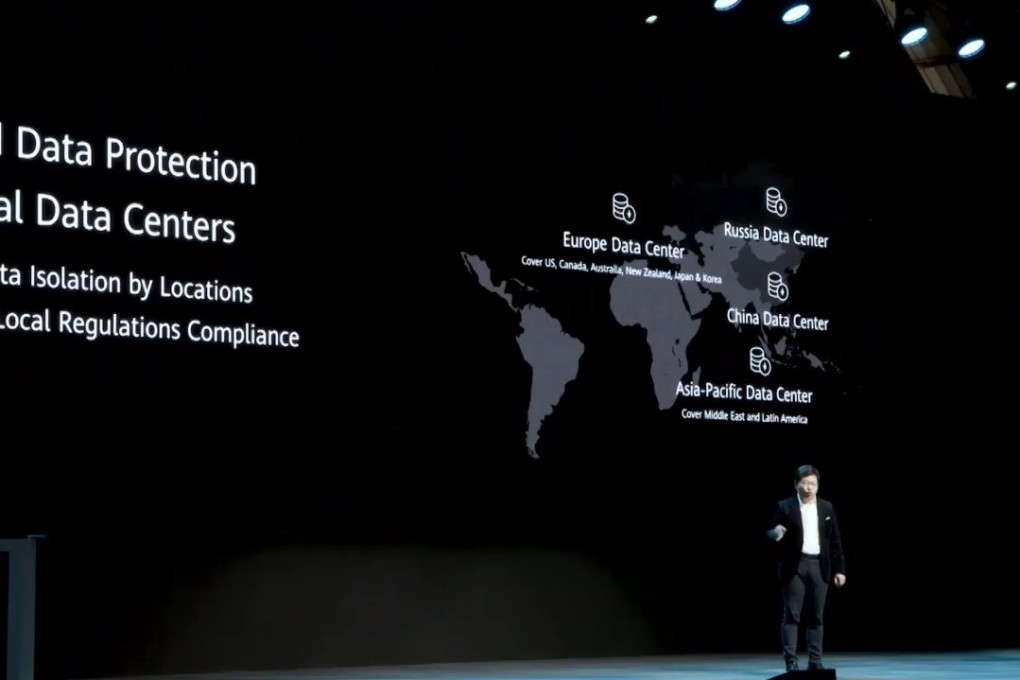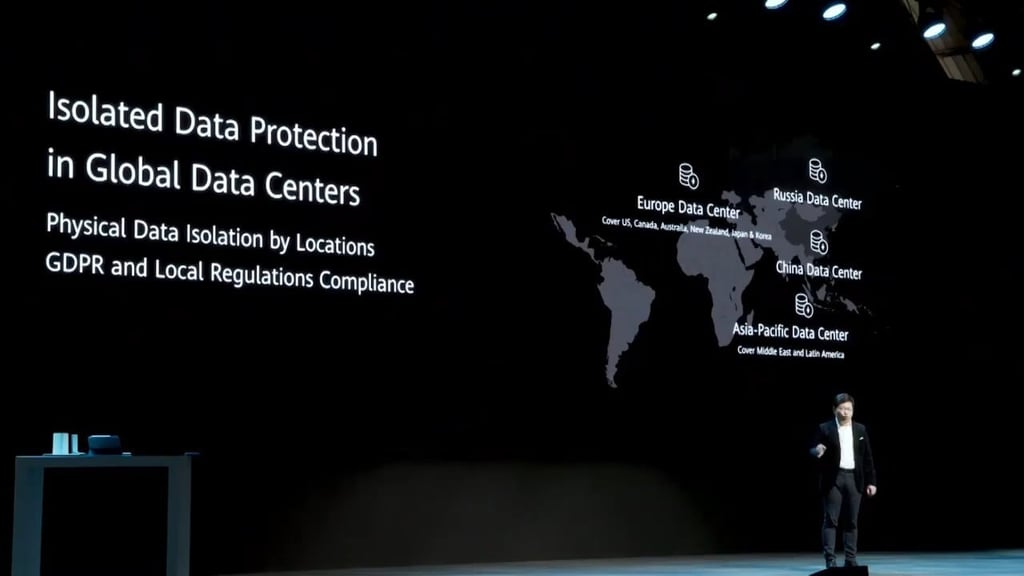Advertisement
Beloved Huawei draws rare fury in China for disputed map
Chinese mobile and telecom giant triggers calls for apology following Huawei Mate XS foldable phone launch
Reading Time:3 minutes
Why you can trust SCMP

This article originally appeared on ABACUS
Huawei has been riding a tide of Chinese patriotic fervor ever since it was banned by the US last year. But when China woke up Tuesday morning, a deluge of social media comments focused not on the tech giant’s freshly launched foldable phones and laptops, but rather on… a map.
Advertisement
One popular post on Weibo, which was liked more than 31,000 times before it was set to private, questioned a world map that appeared in Huawei’s launch event Monday.

Richard Yu, Huawei’s consumer business chief, was explaining the company’s effort to protect customer privacy when the screen behind him showed various locations of its data centers. China’s silhouette left out some disputed geographic areas, such as Aksai Chin, much of which is administered by China but claimed by India. The absence was quickly picked up by eagle-eyed netizens.
“I think this is a matter of principle,” said one comment on Weibo. “A global company using a wrong map of its home country in an overseas launch event. That’s a shameful thing.”
Advertisement
“I don’t think this was intentional, but it’s a really serious error,” another wrote. “[Huawei] should apologize.”
But that wasn’t the end of the story. Huawei removed the original YouTube stream of the launch event and posted a new version hours later. In the new video, the map no longer shows China highlighted in gray. The word “Australia” is also spelled correctly -- unlike in original streams hosted by Chinese media outlets that are still found on Weibo.

Advertisement